Laptop Mag Verdict
The Pixel 7a is the phone that many wanted the Pixel 7 to be last year. At under $500, it is the phone that most Android fans should buy unless they absolutely need a telephoto lens or top-tier gaming performance. Google’s value-based dominance continues.
Pros
- +
$499 price point
- +
Bright, vivid 90Hz display
- +
Excellent photos
- +
Exclusive Pixel features
- +
Solid support
Cons
- -
Mediocre speakers
- -
Performance can’t match flagships
Why you can trust Laptop Mag
Price: $499
OS: Android 13
Display: 6.1-inch (2,400 x 1080) 90Hz Adaptive OLED
CPU: Tensor G2
RAM: 8GB
Rear cameras: 64MP wide (ƒ/1.89); 13MP ultra-wide (f/2.2)
Front camera: 13MP (f/2.2)
Storage: 128GB
Battery: 10:05
Size: 6 x 2.8 x 0.4 inches
Weight: 6.8 ounces
Yes, the Google Pixel 7a is $50 more expensive than its predecessor, which you never like to see for a brand’s budget phone, but as I’ll cover in detail throughout the review, you are getting so much more than $50 in value out of the upgrades to this phone.
The Pixel 7a is the phone that many wanted the Pixel 7 to be last year. It’s slightly smaller at 6.1 inches, but matches the 90Hz display of its flagship counterpart and the OLED panel eclipses its big sibling in every metric that we test. It may not be 120Hz, but I’m not sure if there’s a better display on a phone anywhere near this price.
Google also finally updated the cameras, after squeezing every last ounce of life out of the 12MP cameras that have been kicking around Pixel phones for about half a decade now, the new primary 64MP Quad Bayer sensor in the Pixel 7a gives the budget Pixel the hardware to match its competitor trashing computational photography.
Is this the perfect phone? No, the speakers are mediocre and certain users will be able to hit the ceiling of the Tensor G2’s performance, but this is unquestionably one of the best phones on the market, and that’s before factoring in that it’s just $499.
Google Pixel 7a price and configurations
The Google Pixel 7a only comes in one configuration for $499 and it features a Google Tensor G2 chip, 8GB of LPDDR5 RAM, and 128GB of UFS 3.1 storage.
The only choice you can make with the Pixel 7a is to select from one of these colors: Charcoal, Sea, Snow, or Coral. Given that it’s a budget phone that’s not a bad little color wheel to choose from.
The much-feared Pixel 7a price increase rumors were correct, so while it’s still one of the best values at $499, it’s hard not to feel wistful for the early days of the Pixel A series with the Pixel 3a and Pixel 4a coming in at $399 and $349, respectively. The pricing also comes as a slight shock given that the Pixel 7 has spent the majority of 2023 at $449 or $499, I even called it the best smartphone under $500 last month, but take a look around now and it’s back up between $540 and $599.
Sign up to receive The Snapshot, a free special dispatch from Laptop Mag, in your inbox.
There are already some enticing pre-order deals for the Pixel 7a and I wouldn’t count on it remaining at full price too often given past Pixel pricing, but I strongly suspect this also means we won’t be getting a $599 Pixel 8 this fall. Google can still say that Pixel is a value-base
Google Pixel 7a design
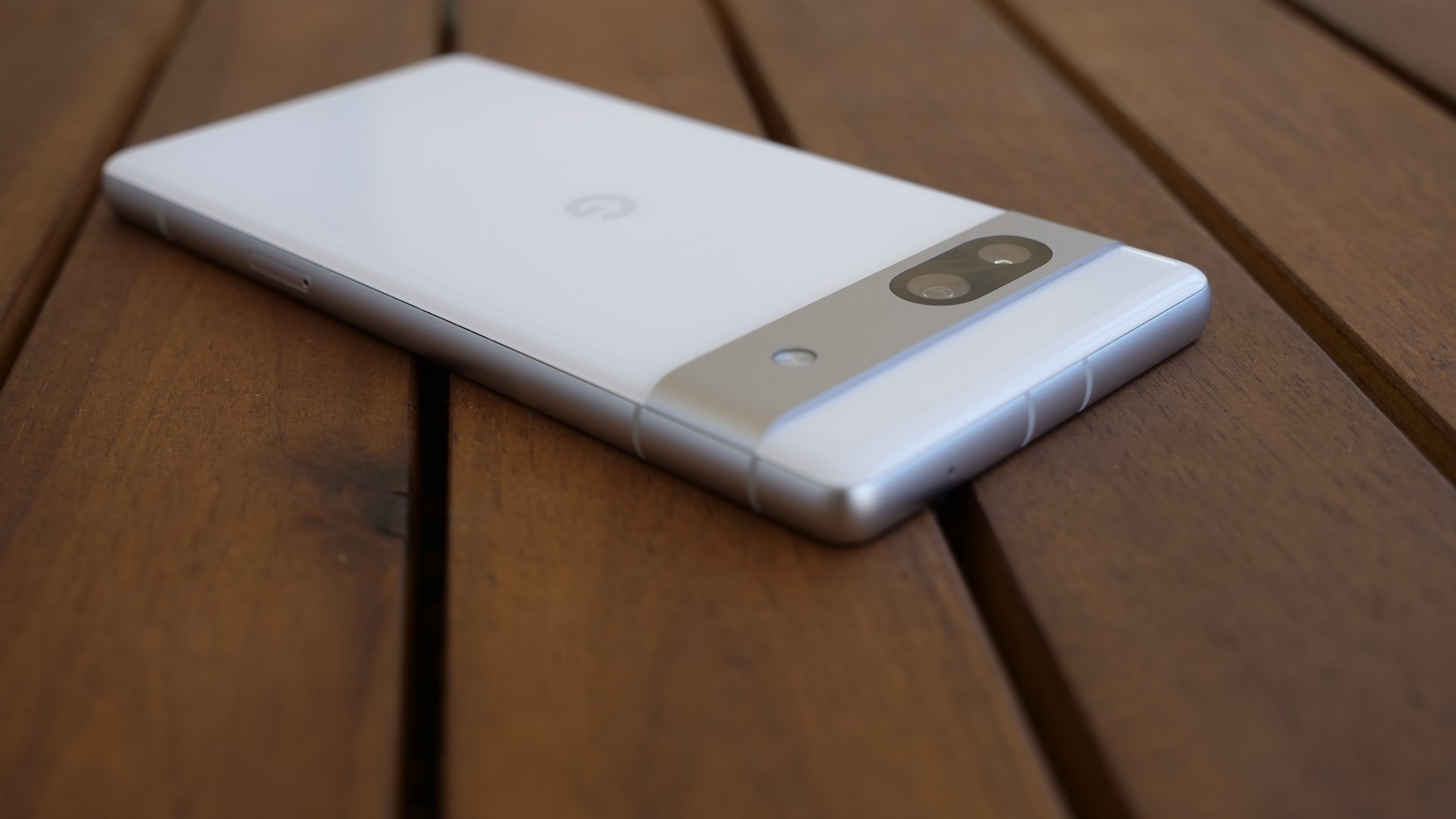
Have you seen a Pixel phone released in the last two years? If you answered yes, then you’ve got a pretty good idea of what to expect from the Pixel 7a. For those of you that have been on a Pixel-free diet since 2020, the Pixel 7a features a fairly traditional slab design with rounded “tactile alloy” edges, but a 3D thermoformed composite back. Fancy terminology aside the back feels like plastic, while the sides feel like metal.
The one place where things get wild is the full-width camera array, made from that same “tactile alloy,” which draws comparisons to Geordi La Forge’s visor from Star Trek: The Next Generation or maybe Cyclops's visor from X-men. It’s divisive, but I still prefer it to the endless sea of samey design that otherwise exists in the non-foldable phone world. Beyond a preference for its unique styling of it, one of my personal peccadillos is also partly to blame. I like to be able to set a phone down without a case and not have it wobble all over the place, Google’s camera bar is the only current design that gets a gold star in that regard.

Another divisive move by Google since the Pixel 6 is the “big or bigger?” options when it comes to its flagship phones. The Pixel 7 features a 6.3-inch display, while the Pixel 7 Pro bumps up to 6.7 inches. Not exactly pocket-friendly for all, so thankfully the Pixel 7a comes in at a manageable 6.1 inches. That translates to 6 x 2.8 x 0.4 inches and just 6.8 ounces. The Pixel 7 gets a little taller and wider at 6.1 x 2.9 x 0.34 inches and 7 ounces. Neither can hold a candle to the diminutive size of the iPhone SE 2022 at 5.2 x 2.5 x 0.3 inches and 5 ounces, but that’s the result of its Lilliputian 4.7-inch display.
The Pixel 7a gets IP67 dust and water resistance, that’s complete protection against dust and enough to hold back water in complete submersion up to 3 feet (1 meter). This is a step below the IP68 rating of the Pixel 7 but matches up exactly with its affordable iPhone counterpart.
Google Pixel 7a display
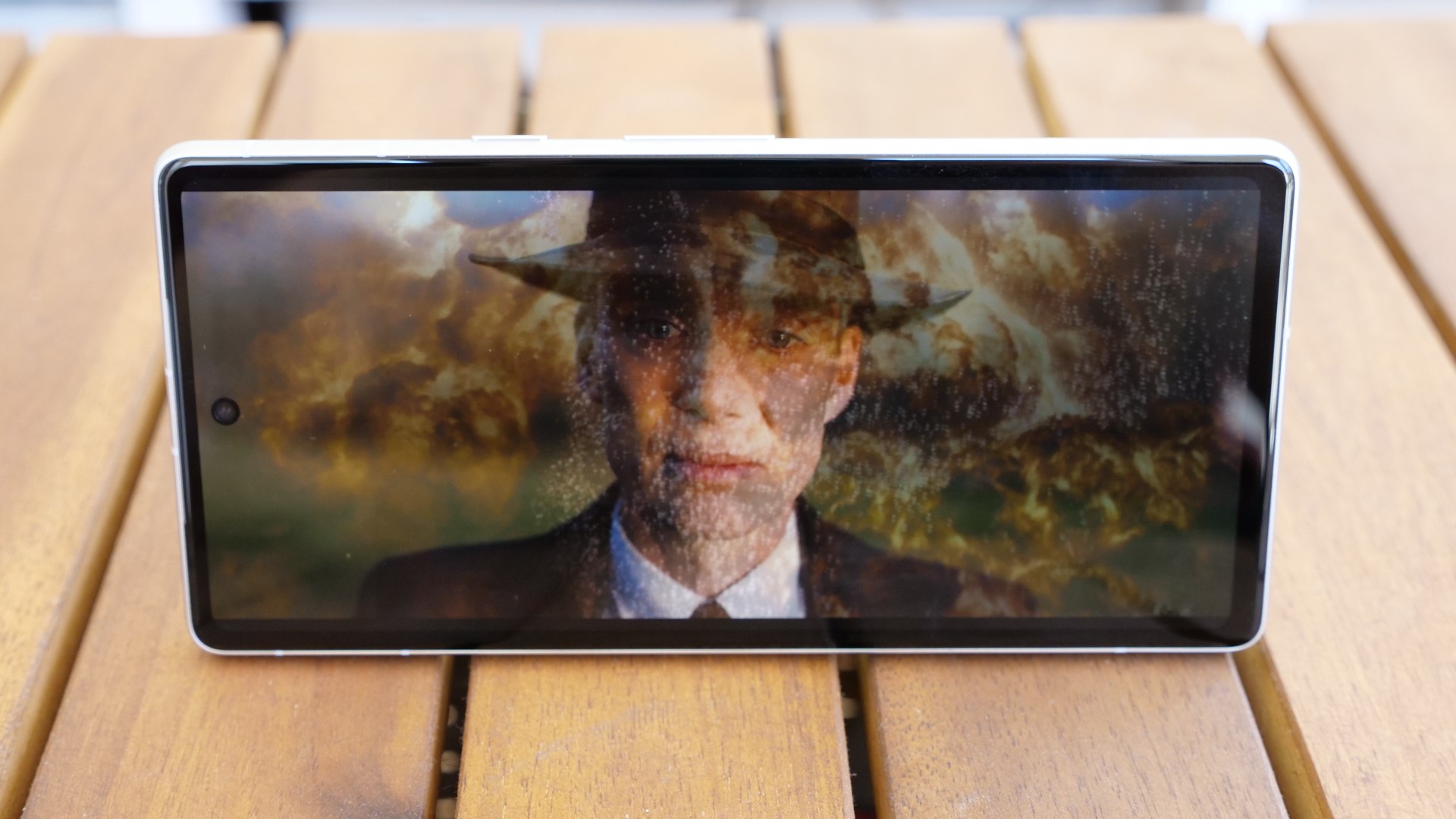
The Google Pixel 7a display is equal to or better than the Pixel 7 display in every regard save for the smaller 6.1-inch size. It’s an OLED with an FHD+ (2400 x 1080) resolution and a 90Hz adaptive refresh rate. And while I knew it looked good from the moment I took it out of the box, it’s always nice to see our lab tests back up those first impressions. While there are sub-$500 phones with 120Hz displays, I don’t find the difference between 90 and 120Hz to be that perceptible and the output from this panel is remarkable.
I watched the latest trailer for Oppenheimer downloaded in 1080p from HD-trailers.net to get a feel for what the display offers. Christopher Nolan’s visuals did not disappoint on the smartphone display. I was struck by the vibrancy and sharp detail throughout, but a cross-fade from a push-in close-up on Oppenheimer (Cillian Murphy) to the initial test explosion was a showcase for what the Pixel 7a display can do. You see every pore of Murphy’s weathered face, the brilliant blue of his haunted eyes, and then it’s subsumed by rolling clouds of orange flames and white sparks before fading to inky blackness.
The Google Pixel 7a was outstanding in our lab testing, particularly considering its value pricing. It reproduced 92% of the DCI-P3 color gamut on its default Adaptive display setting and 79.1% in its Natural setting. That was enough for a victory over the Pixel 7 (77%), the iPhone SE 2022 (81%), and the smartphone average (88%).
The Delta-E color accuracy test results (lower is better) for the Pixel 7a, were the best we’ve ever seen at 0.05. None of the competition came close with the iPhone SE 2022 (0.21) next up, followed by the smartphone average (0.24), and finally the Pixel 7 (0.28).
If you were worried that the Google Pixel 7a’s display dominance would stop at brightness, fear not, with a peak of 1,024 nits on its HDR setting it again eclipsed the Pixel 7 (926 nits), the iPhone SE 2022 (596 nits), and the smartphone average (979 nits).
I have to stress how impressive it is that the Pixel 7a managed a clean sweep on the smartphone averages with its display given that the majority of the smartphones we review are at least double the cost of the Pixel 7a.
Google Pixel 7a audio
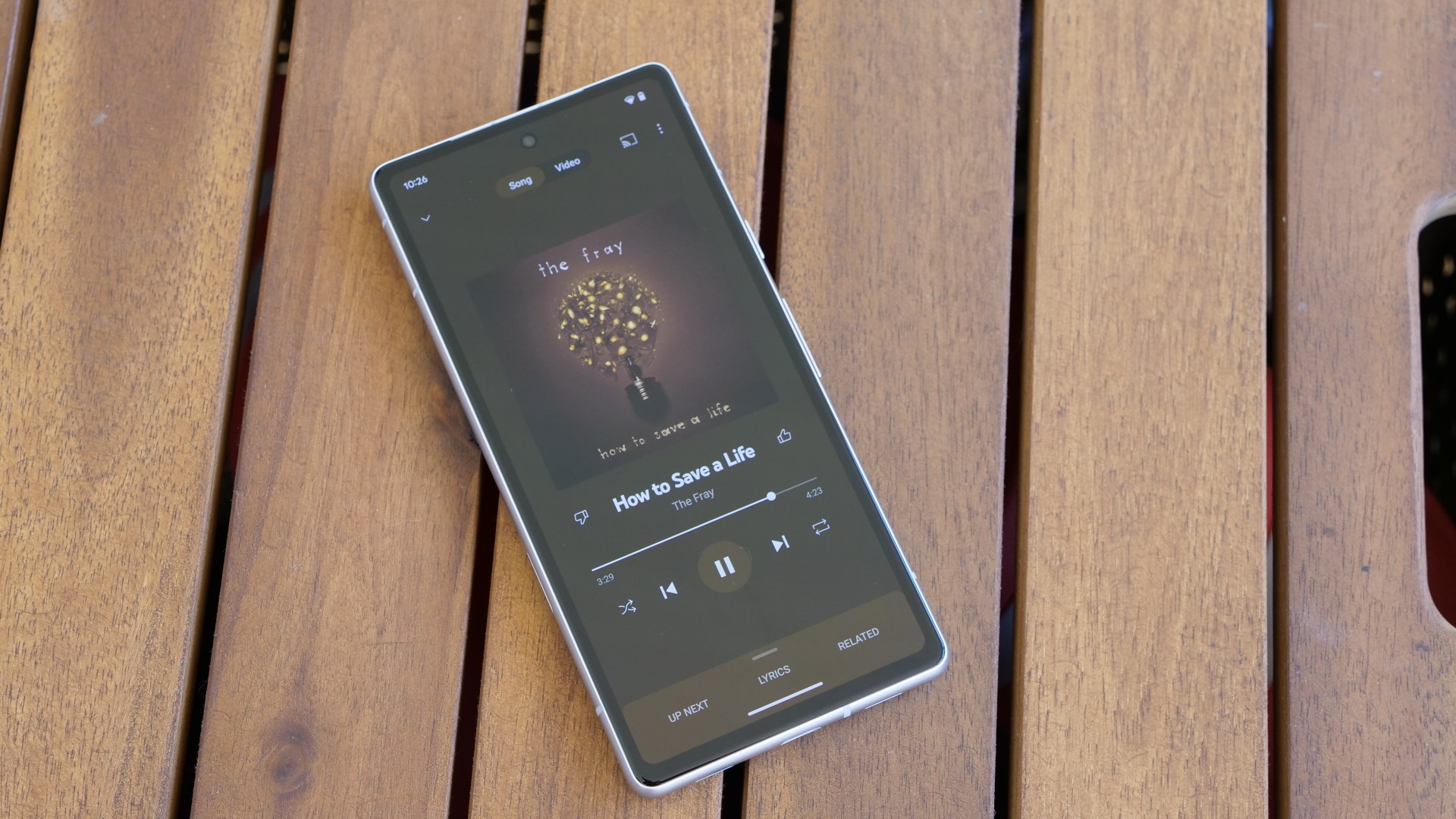
If the Google Pixel 7a has a weakness it's the stereo speakers, which are serviceable, but nothing special. At top volume, you start to get some distracting reverberation, so keep it to around 75% to enjoy the best it has to offer.
I listened to “How to Save a Life” by The Fray because apparently YouTube Music wanted me in a melancholy mood when I opened up the trending rock charts. While the moody tune isn’t particularly bass-heavy, the steady backing percussion lacked any punch. The vocals were crisp and clear (well as crisp and clear as they were recorded) and the light touch on the piano was well produced. If you are like me and your phone’s speakers are typically just playing back a video or spoken word content like a podcast then this won’t matter to you at all, for anything else pick up a good pair of wireless headphones.
Google Pixel 7 performance

The Pixel 7a gains the Tensor G2 chip that debuted in the Pixel 7 and 7 Pro last year, and it remains a bit of a conundrum. For daily usage, I never notice any slowdowns, and particularly when reviewing a phone I can be a frenetic user that is jumping in and out of apps all while running a YouTube video in the background.
I fired up Call of Duty: Mobile and the Pixel 7a kept pace with that fairly strenuous game without skipping any frames. Now there are absolutely better phones for gaming, so if you are doing more than just casual gaming on your phone you might want to consider something like the Galaxy S23 Ultra or OnePlus 11, but for occasional gamers, it won’t hold you back.
With all that said, the Tensor G2 remains consistently underwhelming at benchmarks. In the Geekbench 5.4 performance test, it hit 3,065. That’s marginally better than the Pixel 7 (3,021), but well behind the smartphone average (3,885) and of course the iPhone SE 2022 (4,482).
Graphics benchmarks were more of a mixed bag. In the 3DMark Sling Shot Extreme test it hit 8,824, only slightly behind the Pixel 7 (8,850) and the smartphone average (8,862). However, the 3DMark Wild Life Unlimited was a fail at 1,828, beating out the Pixel 7 (1,755), but distantly behind the smartphone average (2,573).
The Pixel 7a is the poster child for my oft-repeated assertion that smartphones are more powerful than they need to be right now. It’s nowhere near the top of the heap in benchmark performance, but very few users will push past what it can deliver.
Google Pixel 7 battery Life & charging
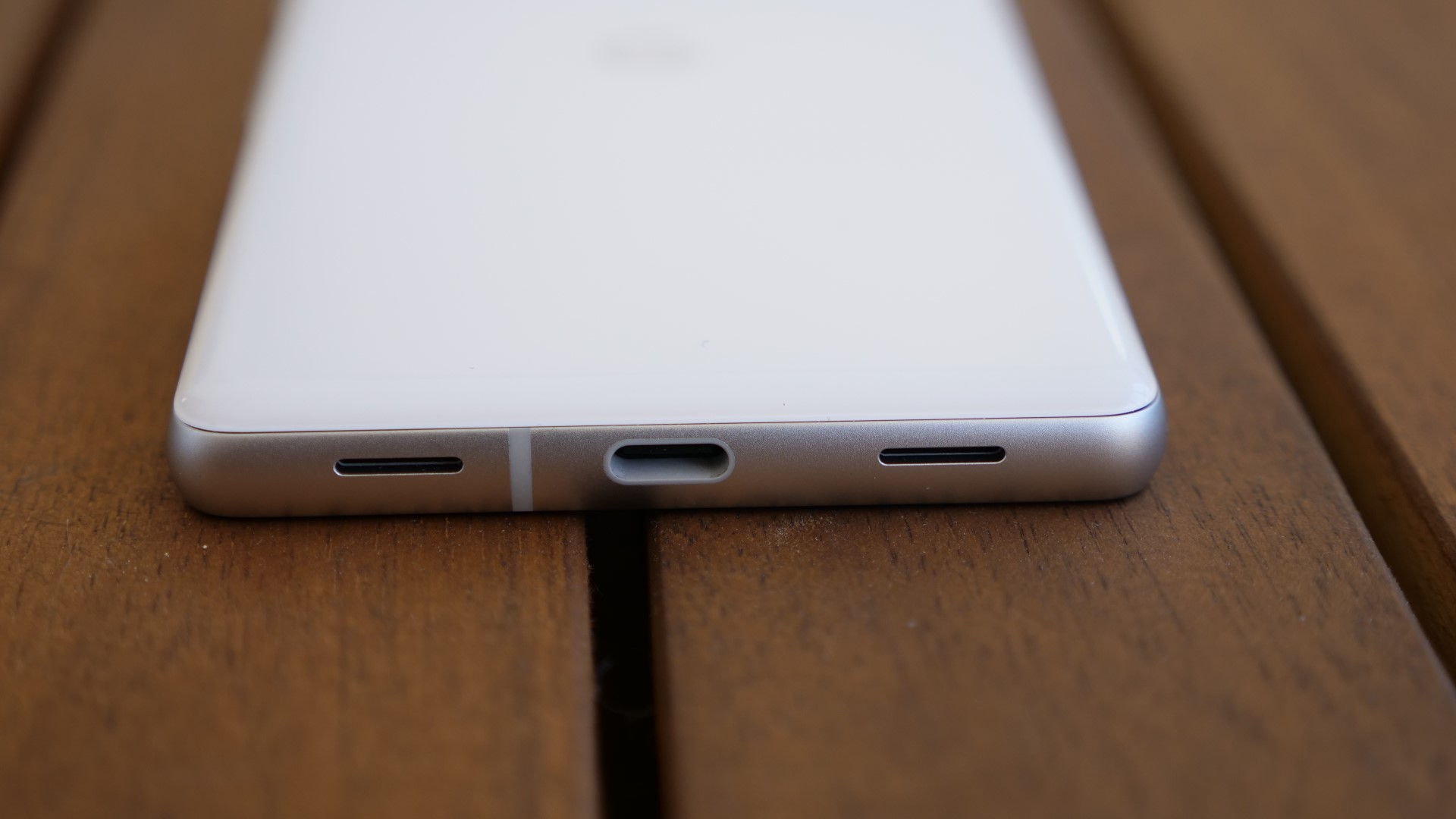
I was a little worried to see the 4,385mAh battery listed for the Pixel 7a after the Google Pixel 7 put up disappointing battery life with its 4,355mAh, but it seems Google cracked the code on Pixel battery life in the intervening months.
In our Laptop Mag battery test, the phone continuously surfs the web over a cellular connection with the display set at 150 nits. It lasted for 10 hours and 5 minutes. Now that’s not going to earn it a spot among our phones with the best battery life, but it’s a marathon finish compared to its predecessors. That was enough to narrowly outlast the smartphone average (9:53), and it left the iPhone SE 2022 (7:38) and the Google Pixel 7 (7:31) sucking wind as it powered through to the finish.
My typical day with a phone runs from 7:30 a.m. to 10:30 p.m. with a mix of Netflix or YouTube streaming on Wi-Fi for roughly two hours, YouTube Music in the background for a few hours, an hour of a podcast, web browsing, using social media, gaming for about 30 minutes, and capturing photos and videos. I haven’t fallen below 20% with this usage during my time with the phone so far and one thing to know about the Pixel battery life is that it gets better as it adjusts to your usage.
The Pixel 7a supports up to 18W fast charging, which is at this point just about the bare minimum to call fast charging, so it’s a good thing the battery life is solid. The big news for me though is the addition of wireless charging to a Pixel A series for the first time, I have a hard time living without it at this point.
To test the wired charging speeds we used our 20W charger, the Pixel 7a reached a 21% charge in 15 minutes and 43% charge in 30 minutes. That’s roughly even with the Pixel 7 (20%, 41%), but slower than the iPhone SE 2022 (31%, 61%), and the smartphone average (31%, 58%).
Google Pixel 7 cameras
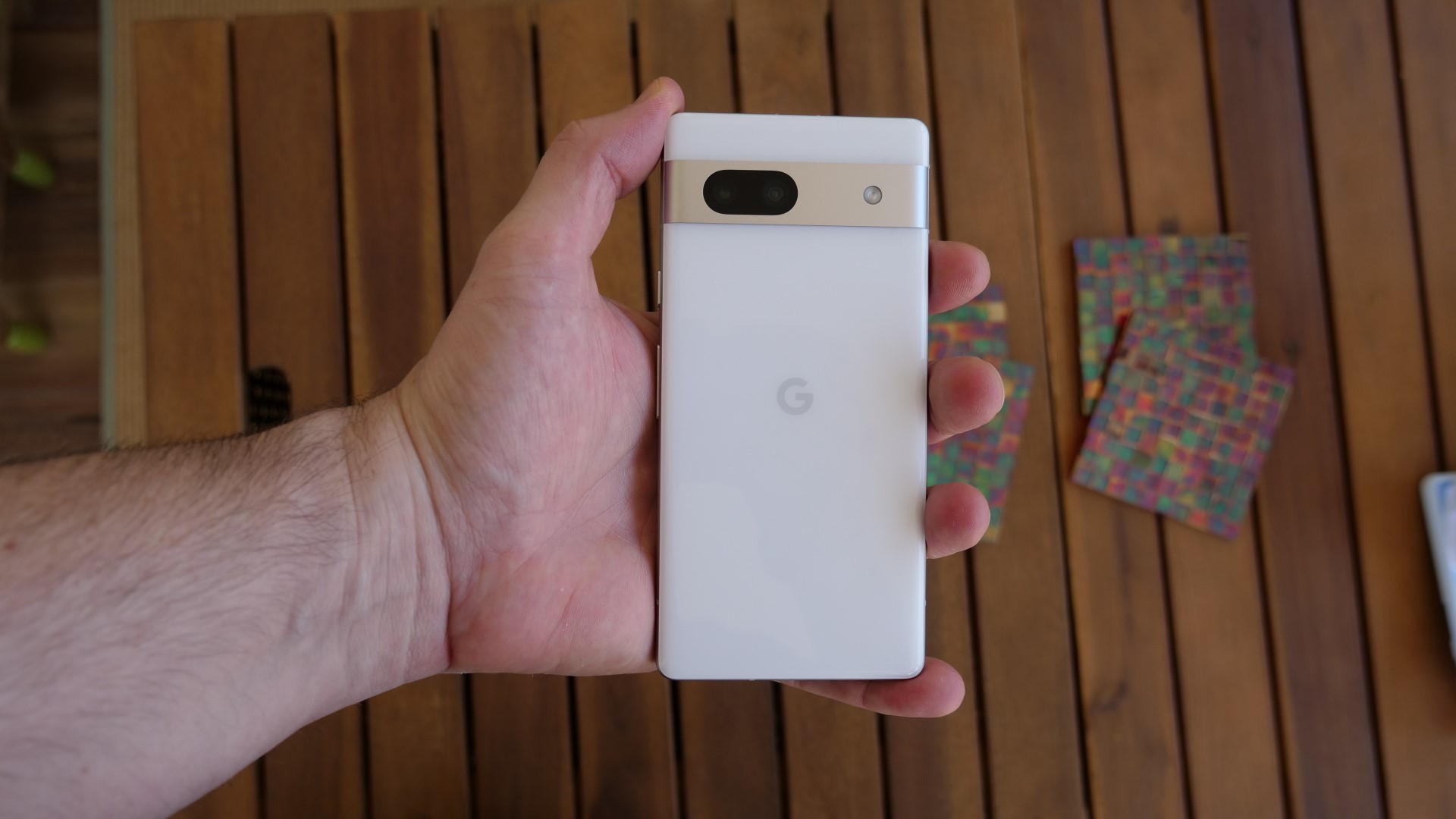
The Google Pixel 7a finally gets the camera makeover that we’ve been hoping for in the A series and it was worth the wait. The primary 64MP Quad PD Quad Bayer wide-angle camera with its f/1.89 aperture and 0.8µm wide pixels (1.6µm with pixel binning) produces some of the best low-light shots that I’ve seen in my testing so far. The ultra-wide gets an upgrade as well to a 13MP at f/2.2 and a 1.12µm pixel width. Don’t leave out the selfie camera either, front-facing photo fans will appreciate the new 13MP 95-degree ultrawide at f/2.2 with 1.12 µm pixel width.
While spring is still only reluctantly emerging in Wisconsin, the Pixel 7a’s main camera drew what color it could find out of my stroll through the neighborhood and around a local pond. The shots below show sharp detail in the grasses surrounding the pond and the fluffy bedding on the nest of a goose. Google has struck an excellent balance with the default settings here, not trending too warm or cool and accentuating the colors without falling into the hyperreal HDR look.
Check the final photo for a look at the stellar extreme low-light performance, the only lighting in the room was from my monitor roughly 5 feet away and I was standing between the Millenium Falcon and the monitor. The fact that it nailed the freshly painted white wall and kept every detail on the model in those conditions blew me away.
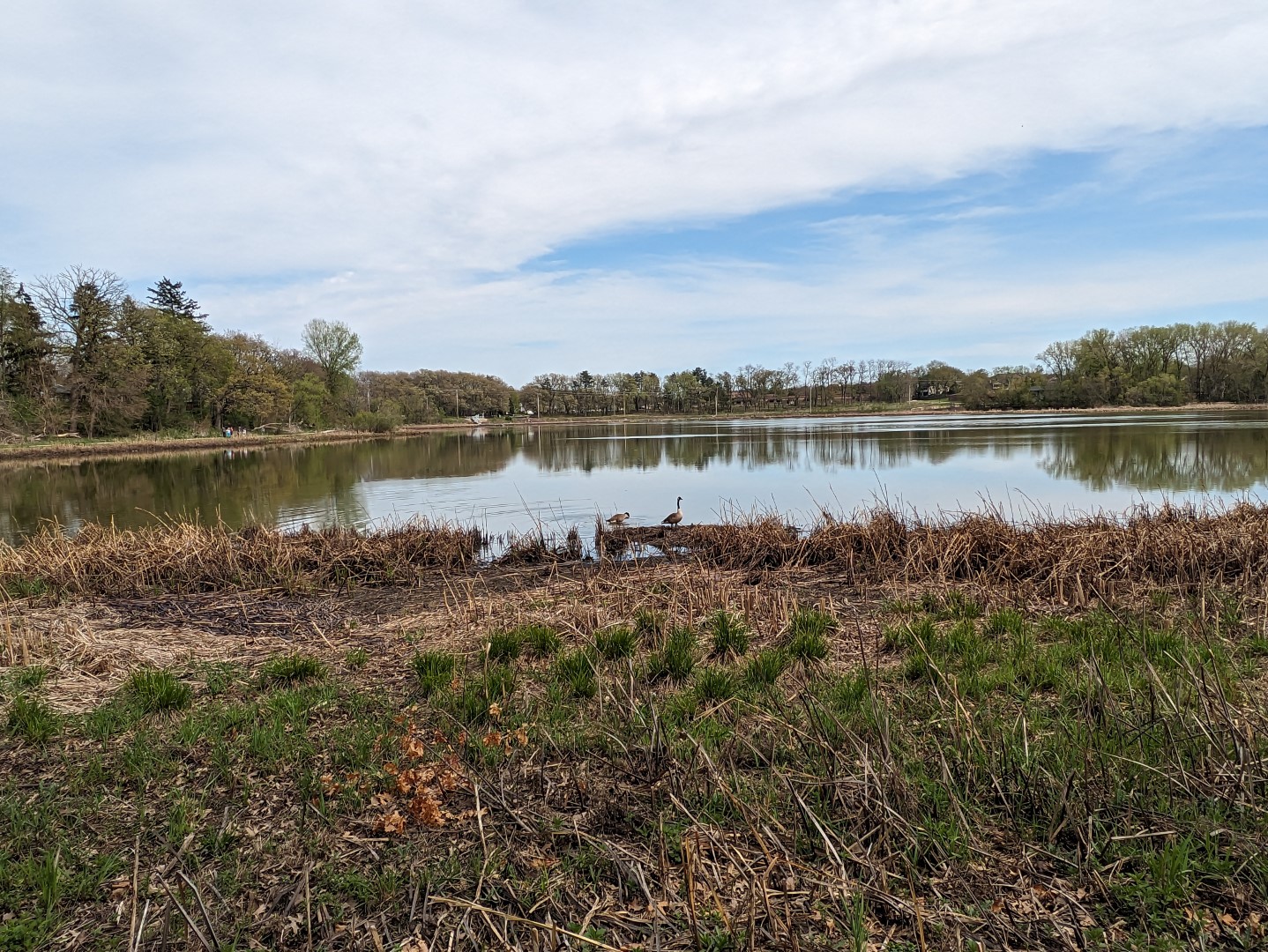
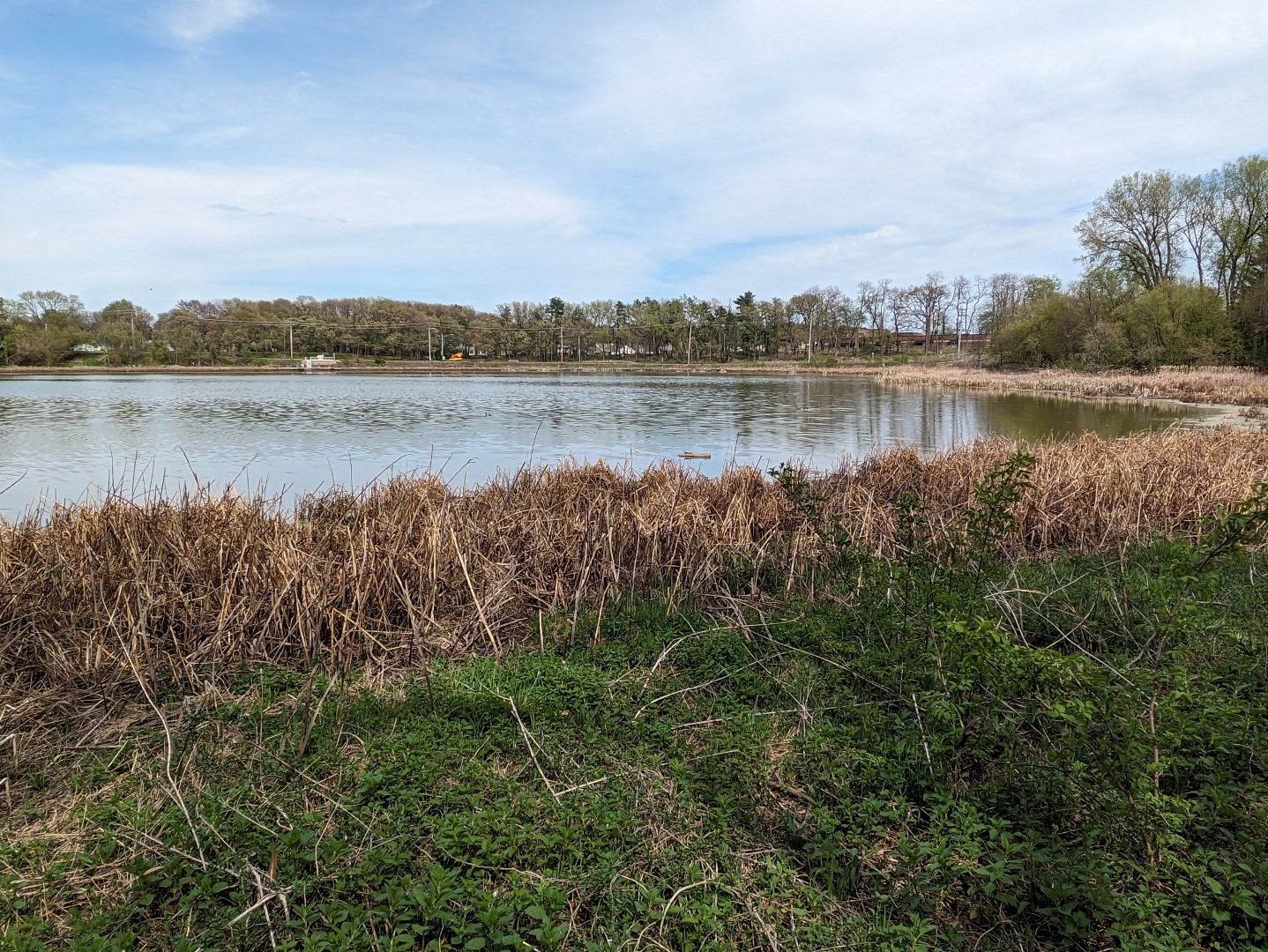
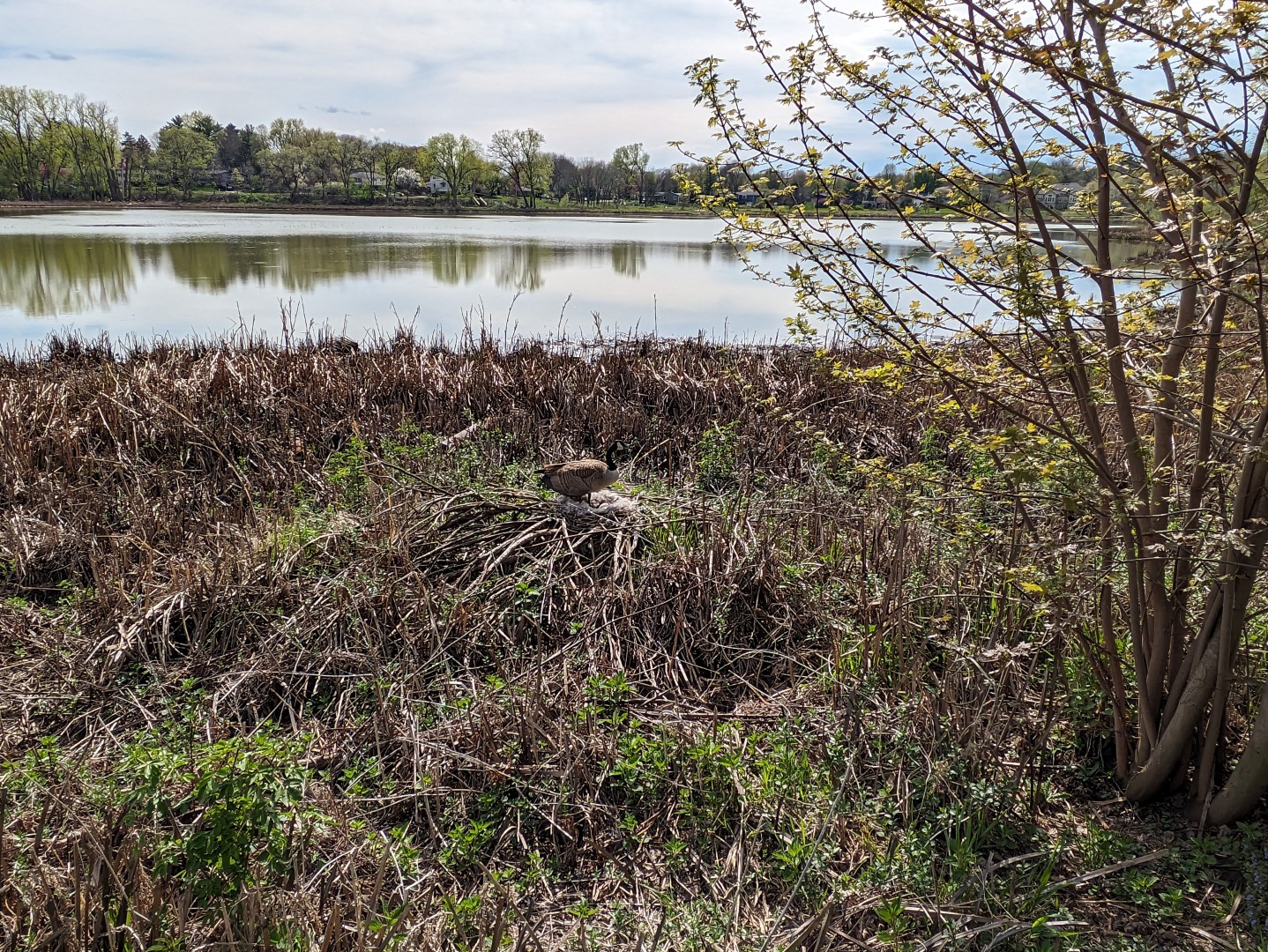
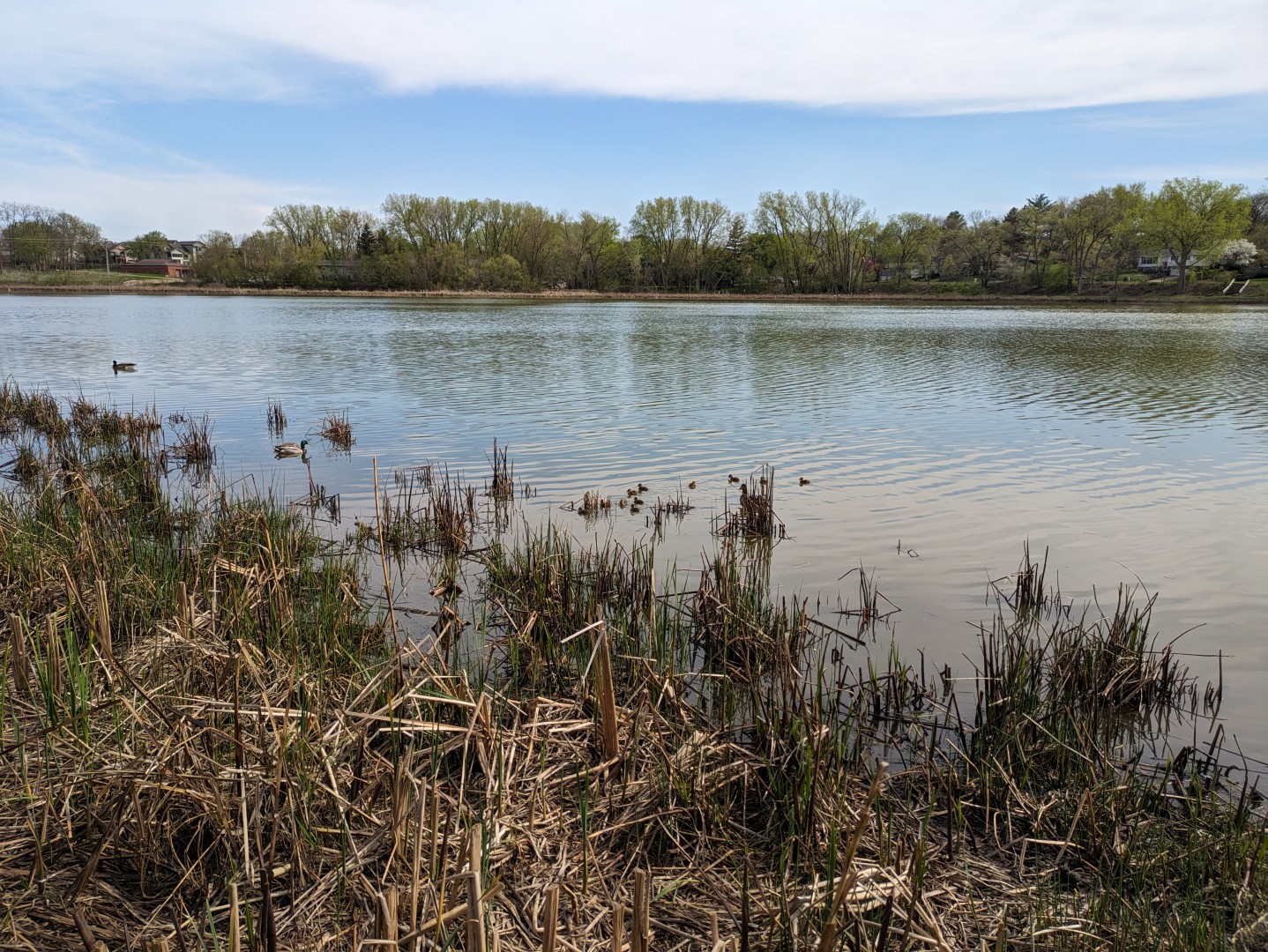
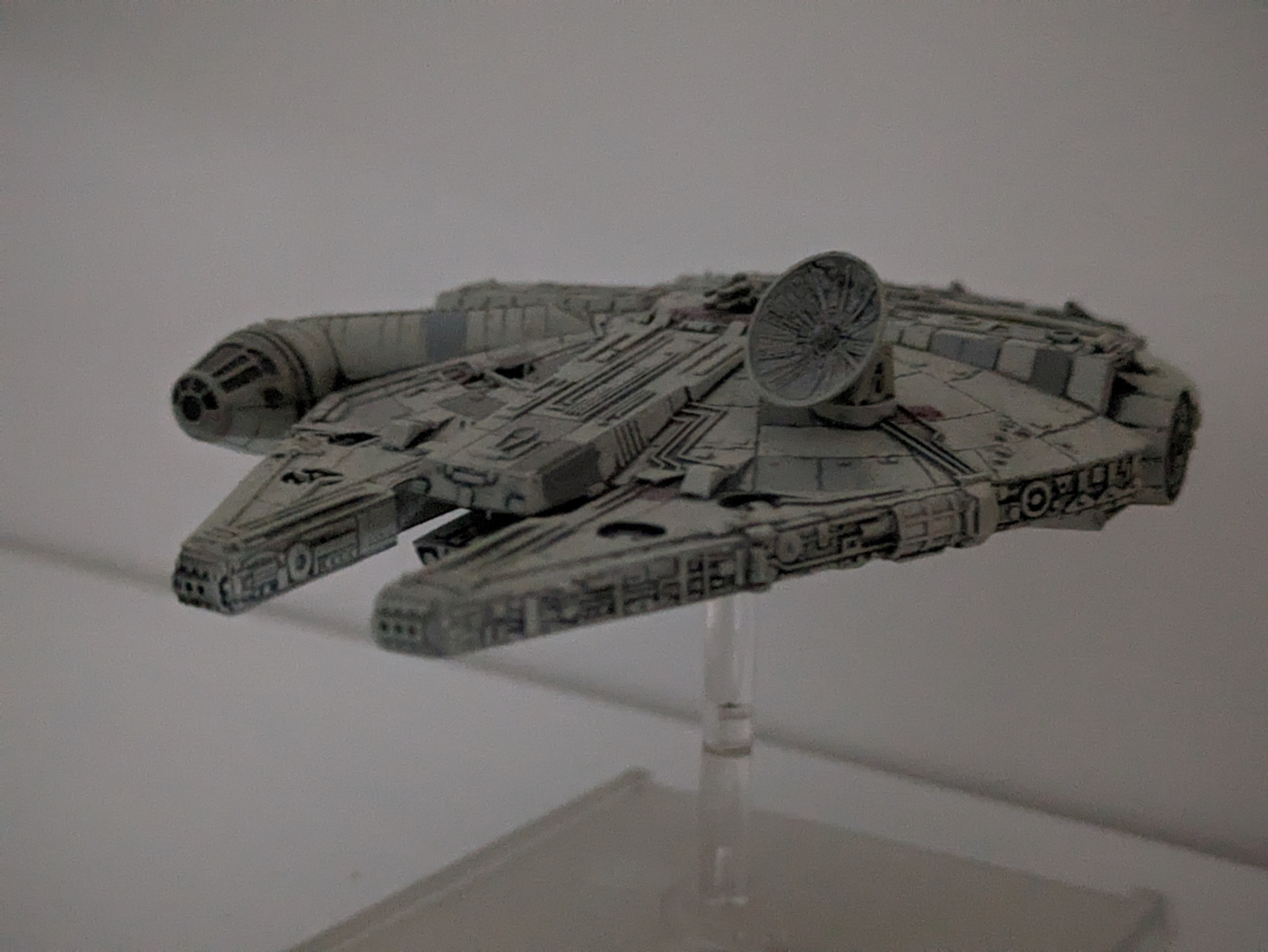
Turning to the ultra-wide, it’s color-matched well enough to the primary camera that I can’t see any differences in the sky, grasses, or water from one to the other in the set of shots that I captured during that same walk below. I would like to see Google improve the warping at the edges. Look at the shot of the goose on its nest and you’ll see that on the far right the tree branches appear a bit stretched. It’s less noticeable in landscape shots and you can of course crop the final photo to eliminate the problem, but Google’s software should be able to clean it up a bit better.
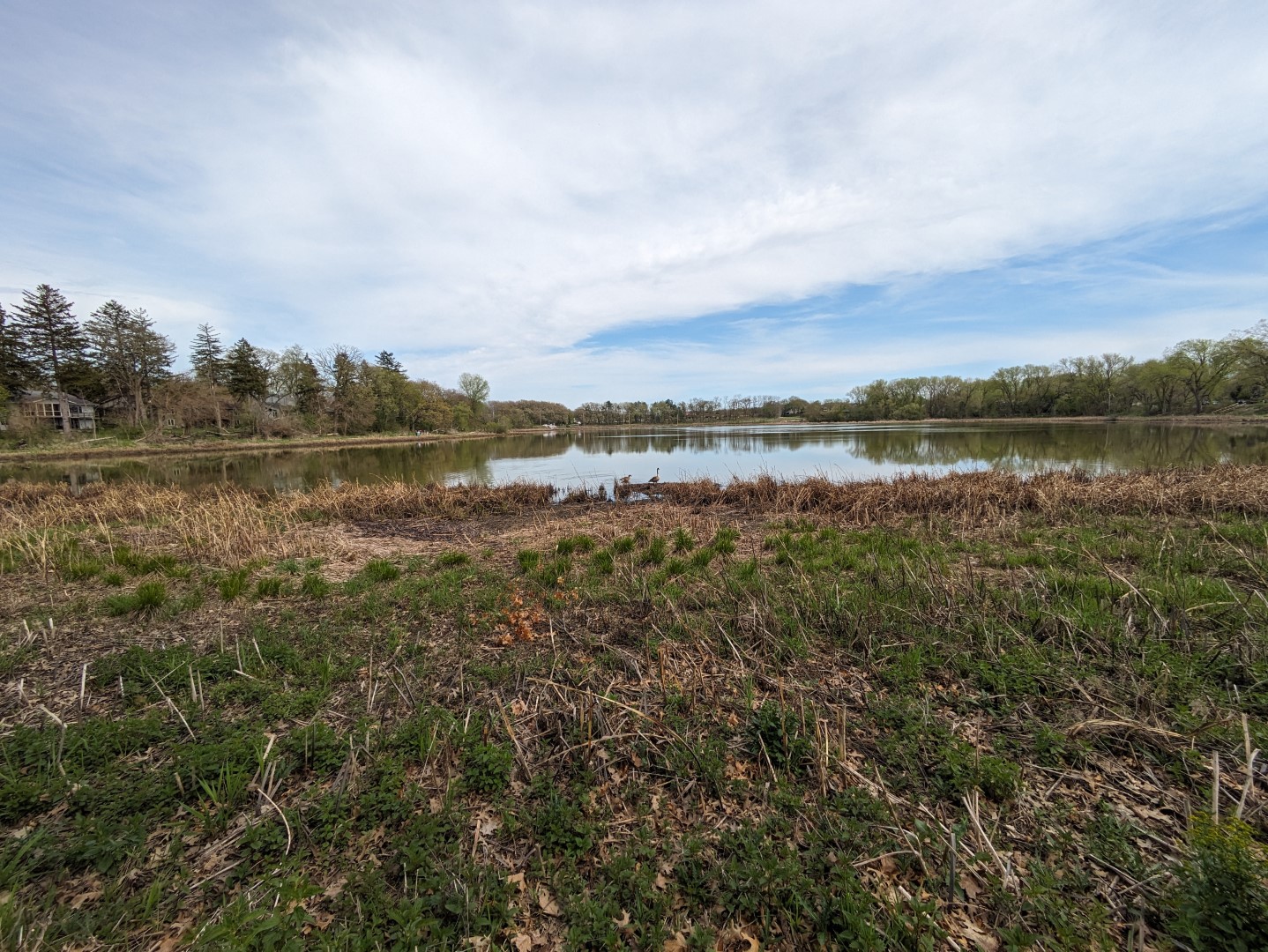
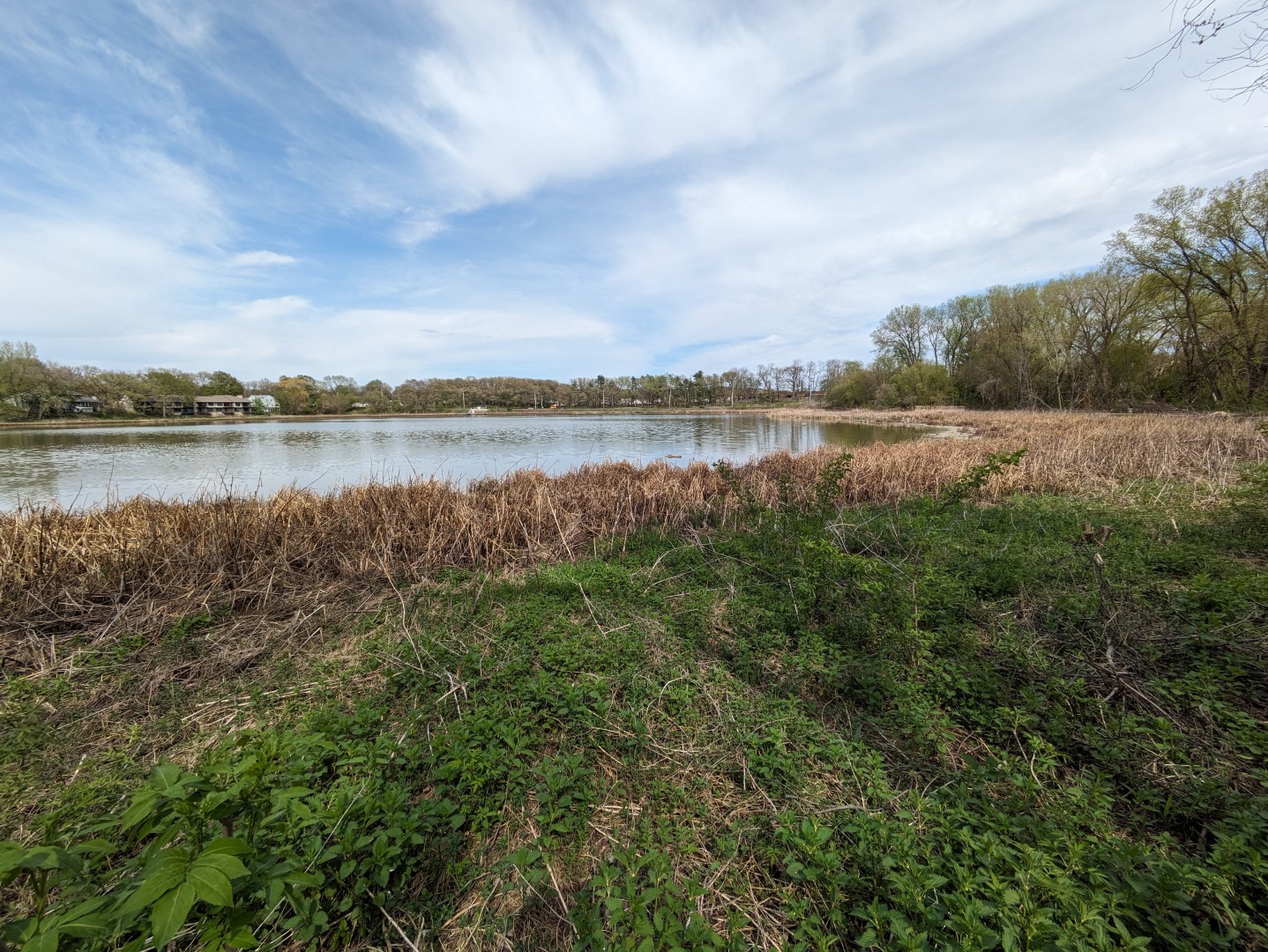

While the Pixel 7a doesn’t include a telephoto, I have to give Google credit for its 8x digital super zoom. Google kept it reasonable, not trying to push for 20x or anything outlandish and the 8x shots remain quite sharp. Some extra contrast creeps in, so you may need to do a little editing to get these shots exactly as you like them, but getting very usable 8x photos as you can see below will keep you from getting attacked by a nesting goose for getting too close.



I would mock my own selfie skills, but you’ll see the results anyway so there’s no point. With that said, the front-facing camera on the Pixel 7a does a solid job with what it has to work with. Using portrait mode it found the edges of my unkempt hair effectively and regrettably, that pallor is my current skin tone after a long winter indoors.

While photography is definitely the forte for the Pixel 7a, its video chops aren’t bad. 4K capture at up to 60fps can allow for smooth and sharp footage and Google continues to improve its video features with Cinematic Pan, Astrophotography timelapse, active video stabilization, and more. I’ll be offering more extensive coverage on the Pixel 7a’s photo and video features in the future to see just how far we can push those capabilities on this sub-$500 phone, but rest assured it is unequaled by anything near this price point.
Google Pixel 7a software
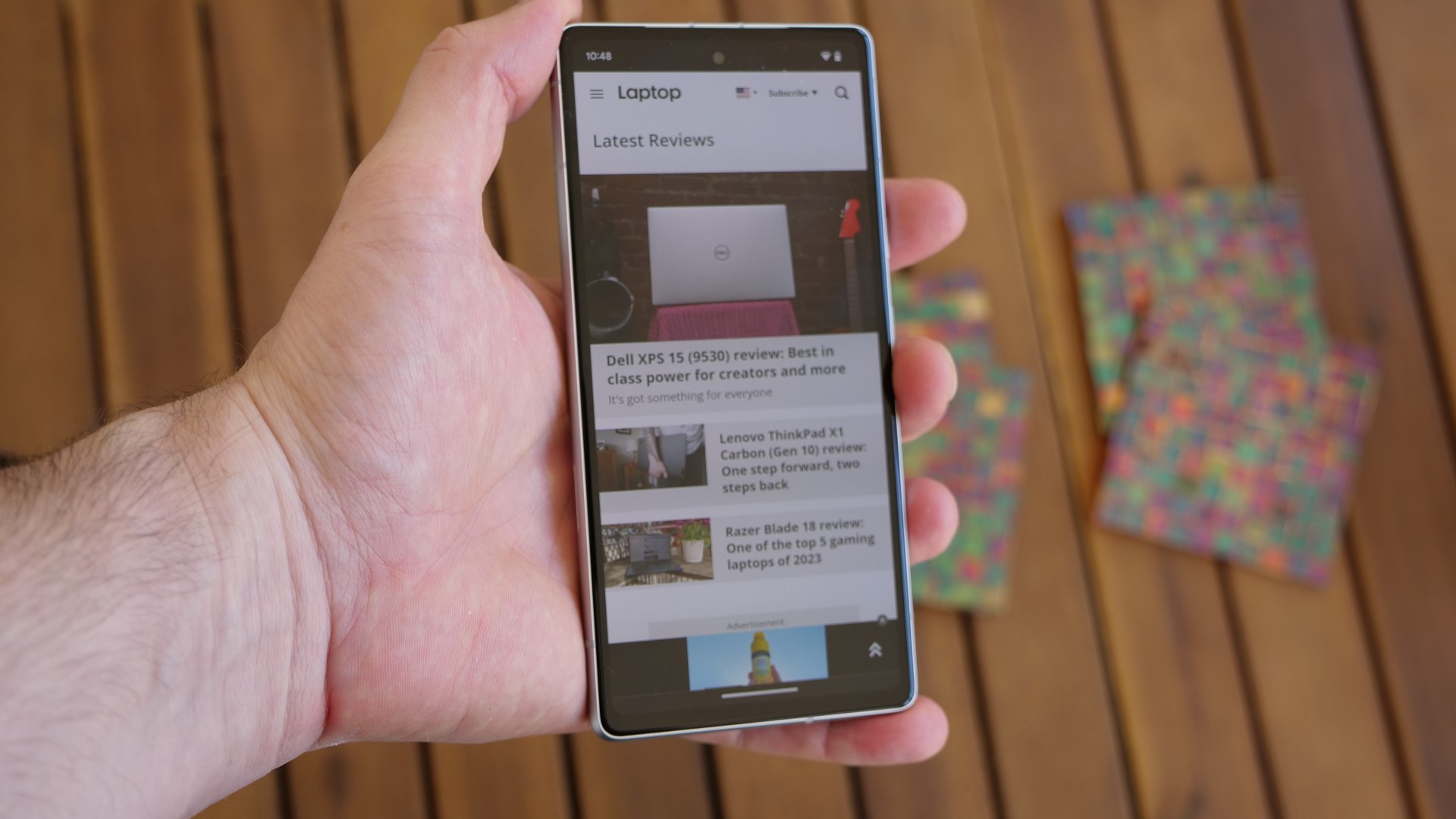
The Google Pixel 7a runs Android 13 with a little bit of special Pixel sauce on top. While it’s not pure stock Android, it’s the closest any OEM comes to it and my favorite Android skin. Add in the Pixel exclusive (and timed Pixel exclusive) features and the consistent and reliable updates, and there’s a strong case to be made for Pixels as the best software experience on any Android phone.
This is all the more true since Google moved to its own Tensor chip that is customized for some of the AI features that Google has introduced in recent years. This includes numerous calling features like Direct My Call which lets you see pressable menu options when calling businesses without having to wait to hear them. Google’s Recorder app is a life-saver for journalists with automatically applied speaker labels that you can easily update. If you hate typing on your phone, Google’s enhanced Assistant Voice Typing lets you give your fingers a rest by just saying “Hey Google, type.”
Google promises five years of Pixel updates, which requires a little explanation. That’s five years of security updates that could also include Pixel feature drops and additional software updates. I would like to see Google move to four years of major Android updates, like Samsung and OnePlus, but considering how many of Android’s best features aren’t tied to the major OS updates, I don’t feel it’s a serious concern.
Bottom Line
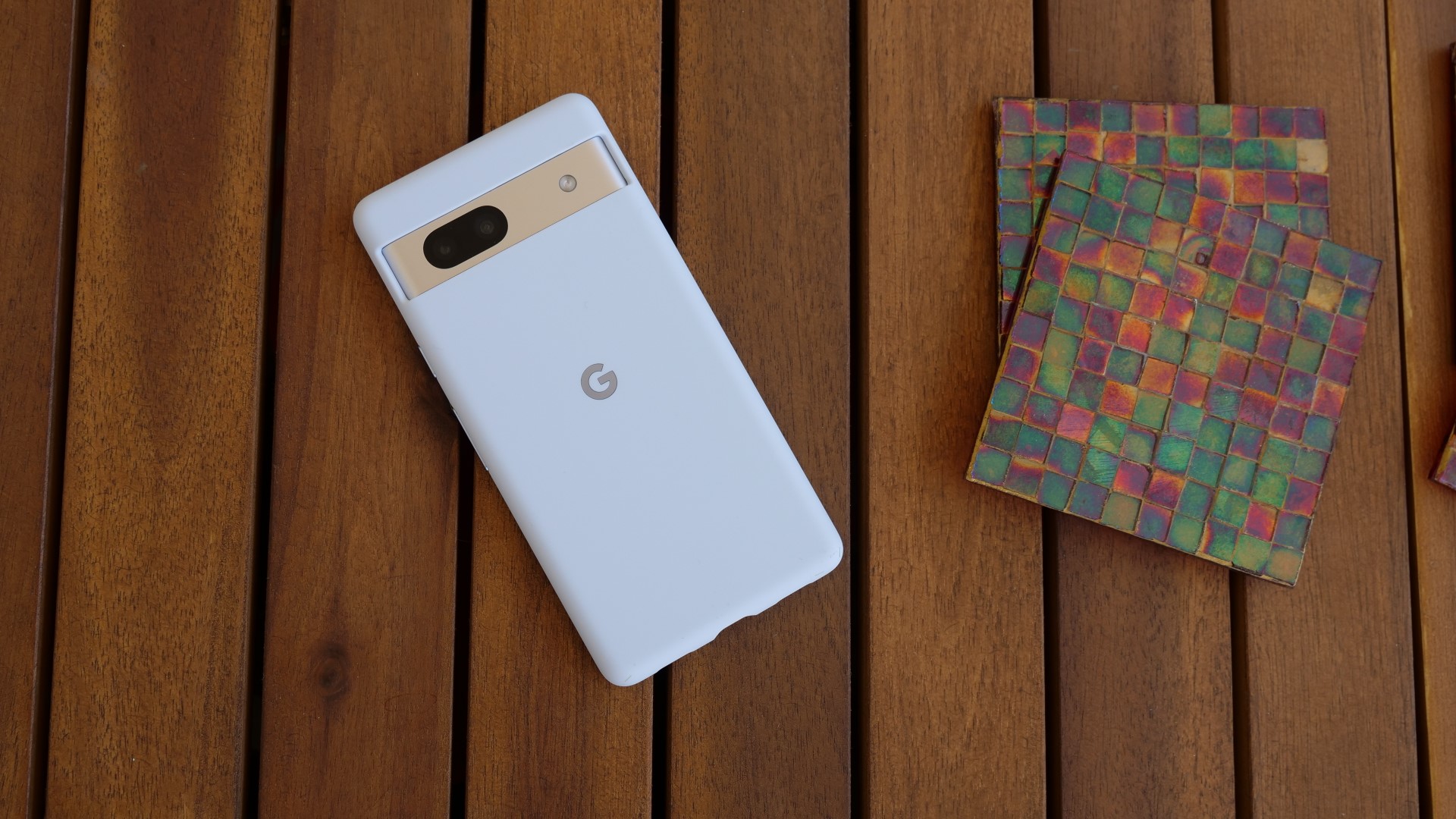
The Google Pixel 7a once again claims the title of the best budget phone and my pick for the best phone under $500. The OnePlus 11 is the only option below $1,000 that I think is worth considering over the Pixel 7a and that’s if gaming on your phone is one of your top uses.
Google has struck a near-perfect balance with this hardware and combined with the consistent Android updates, unique Pixel software features, and the growing Google hardware ecosystem it is going to be difficult for me to get away from recommending the Pixel 7a this year.
There are reasons to skip it. If you have to be in the Apple ecosystem, then by all means you need an iPhone. If you have to have a true optical telephoto zoom or high-end performance, then there are Android flagships that are a better choice for you. But for the majority of people, I think the Google Pixel 7a is likely to hold up as the best phone of 2023.
Sean Riley has been covering tech professionally for over a decade now. Most of that time was as a freelancer covering varied topics including phones, wearables, tablets, smart home devices, laptops, AR, VR, mobile payments, fintech, and more. Sean is the resident mobile expert at Laptop Mag, specializing in phones and wearables, you'll find plenty of news, reviews, how-to, and opinion pieces on these subjects from him here. But Laptop Mag has also proven a perfect fit for that broad range of interests with reviews and news on the latest laptops, VR games, and computer accessories along with coverage on everything from NFTs to cybersecurity and more.


